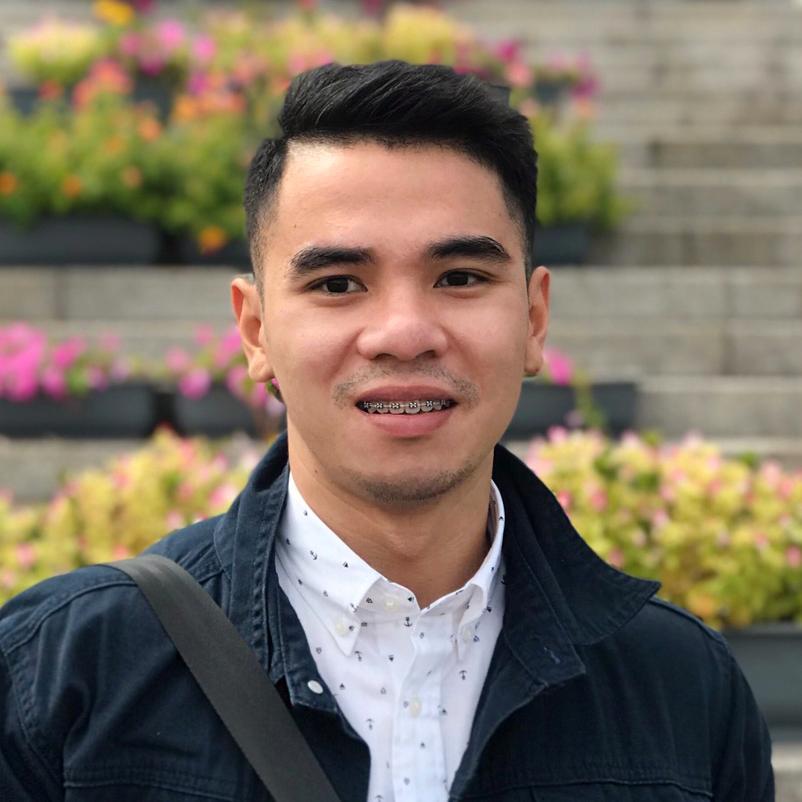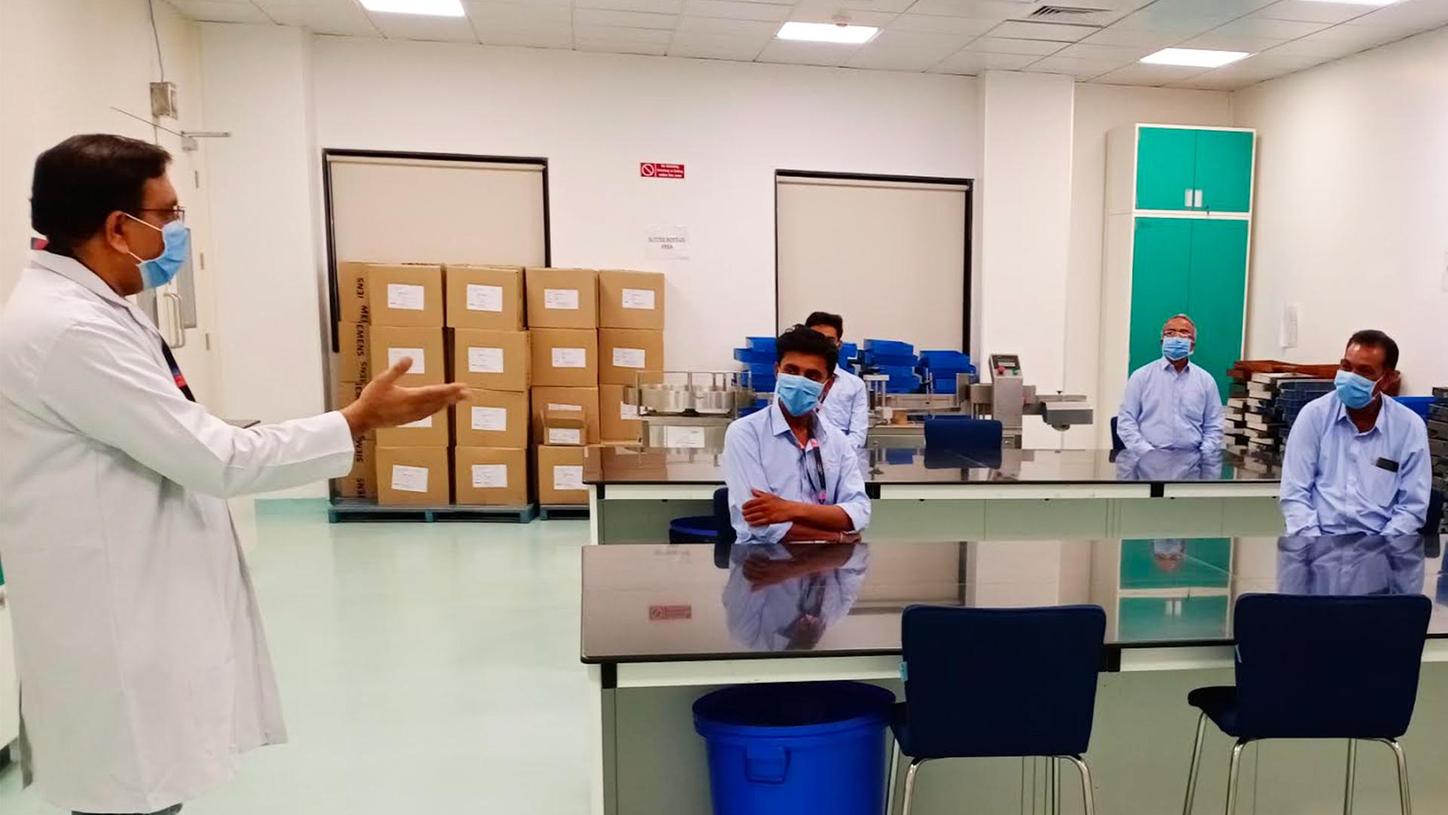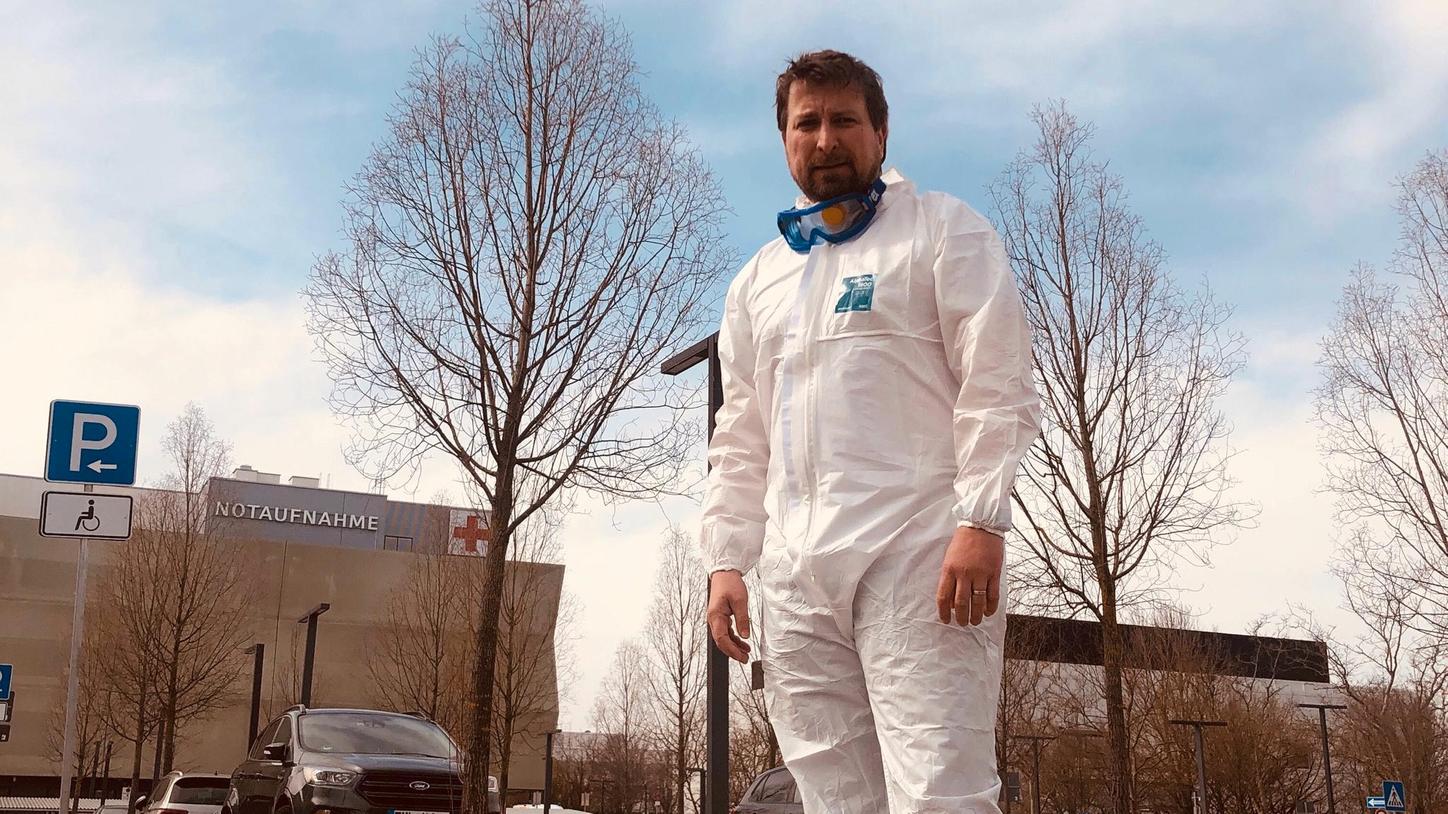Lending a helping hand
There are countless reasons why people volunteer. For Maria Driscoll and Isnaini Nurwahyuni, it was an opportunity to do something positive and help others. Both have been working side-by-side with hospital staff, supporting and adding value to their work.

Maria Driscoll, Data Analyst at Siemens Healthineers
Maria Driscoll has been working as a Data Analyst at Siemens Healthineers since last October. Her role involves collecting, processing and performing statistical data analyses to help Siemens Healthineers improve products and solutions. Her profession fulfills her, yet she wanted to do more to support healthcare institutions and communities in these tough times. Siemens Healthineers allow employees in Great Britain and Ireland to take time off to work with the National Health Service (NHS). The local HR team created a special kind of annual leave, in which employees trained in healthcare disciplines can volunteer to work.
Maria seized the opportunity and knew immediately where her help would be most effective. Her dad works in the HR department at Cardiff and The Vale University Health Board (UHB) in Wales, UK, which provides a wide range of services to the local population. “Their workload has increased exponentially, because they’ve had to hire over 1,000 employees for the COVID-19 hospital,” Maria remembers. “I asked my dad, do you need me, can I come and help? And he said yes, how quickly can you get here?”
A totally new experience
The HR department at Cardiff and The Vale UHB was stretched to their limits because their workload had risen dramatically – but the number of staff was decreasing due to COVID-19 infections. Maria supported the HR department, mostly by coordinating new employees who started working in the COVID-19 hospital. “We were also looking at redeploying staff to different areas of the hospital to do different work,” she explains. “There are many employees who are working in an area that's less essential right now, for example, dental nurses, and they’re being redeployed somewhere else. Equally, there are staff who are at high risk and can’t work in a COVID-19 hospital.”
Marias’s work was mainly operational and included a lot of administrative tasks. “I was supporting the HR department with the massive amount of paperwork they had,” Maria says. Her role as a Data Analyst requires lots of creativity and problem-solving skills in order to think outside the box and find new solutions. This background helped her tremendously when she was supporting the HR department. For example, she reorganized spreadsheets to make them more efficient and took care of a couple of software updates.
An inspiring commitment
“When we think about hospitals, we usually think about nurses and doctors, but there's also all the background staff that you just don't think about,” Maria says. Their commitment and drive have inspired her. “A lot of these staff members could easily have said, No, I've got kids at home, I don't want to be working in the COVID-19 hospital – but they didn’t do that.”
Maria is grateful that she could support Cardiff and The Vale UHB for one week. “I walked out of the NHS offices so immensely proud that I work for a healthcare company that allowed me to volunteer to make a difference,” she shared

Isnaini Nurwahyuni (Yuni) volunteered at Wisma Atlet in Jakarta, Indonesia, as a radiographer
Lending a Helping Hand: Part 2
As the number of cases continued to rise in Indonesia, hundreds of patients had to be screened daily. This situation inspired clinical application specialist Yuni Nurwahyuni to return to her old passion and support her fellow radiographers. Before she joined Siemens Healthineers as a Clinical Application Specialist in February 2017, she had been working as a radiographer for about four years. “As a healthcare professional, I felt the urge to help my fellow radiographer colleagues on the front line,” she recalls.
When the Indonesian State-Owned Enterprises Ministry was looking for people with a medical background to volunteer to help mitigate the impact of COVID-19, Yuni eventually decided to volunteer at Wisma Atlet Kemayoran. On March 23, the former 2018 Asian Games’ athletes’ village in Central Jakarta was converted to a COVID-19 emergency hospital in response to the growing demand for healthcare services.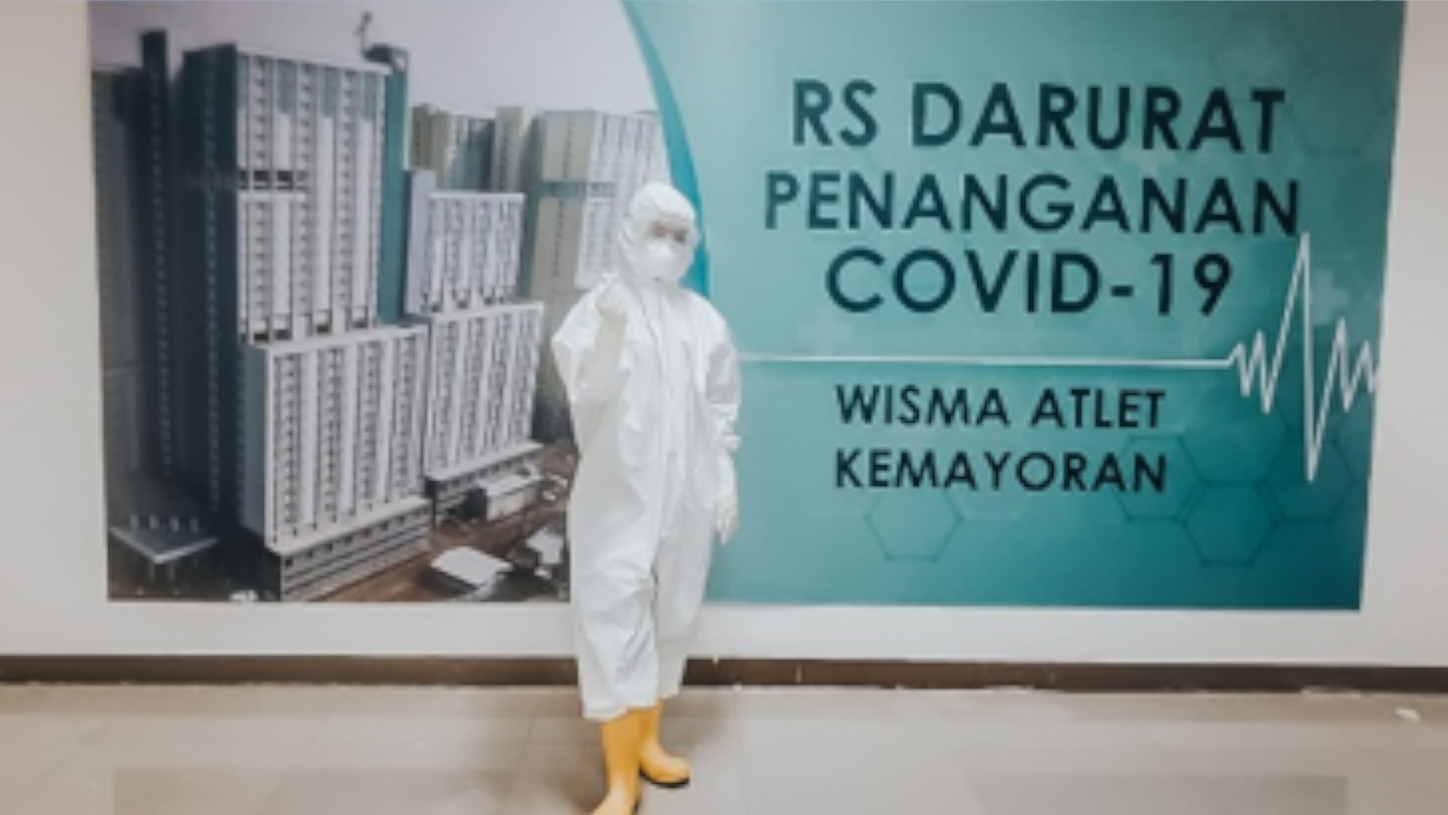
Isnaini Nurwahyuni (Yuni), Clinical Application Specialist at Siemens Healthineers Indonesia, wearing her full PPE and ready to scan patients at Wisma Atlet
A strong calling to help
At the beginning, Yuni’s family and friends were concerned about her intention to volunteer. “I explained to them the situation and my reasons for volunteering. I was anxious too, but I believe in the calling to volunteer, and I felt proud to be able to do my part,” she states.
At Siemens Healthineers, it’s Yuni’s job to ensure that practitioners are equipped with up-to-date information on their state-of-the-art imaging equipment. Along with her background as a radiographer, this role helped her make an important contribution to the radiology services needed at Wisma Atlet Kemayoran. She was responsible for thorax X-ray scanning of patients’ lungs to help defend, define and diagnose patient pathways. In total, she processed scans for about 400 patients during her 14 days of volunteer work.
A special experience
During each shift she always had to wear protective clothing because she was deployed in a high-risk environment. Since the COVID-19 emergency hospital is under Indonesia government and controlled by the local army, she had to follow every instruction very disciplined. For example, she attended the morning roll call or was given the meal ration allocated to her. "It is like I get trained to be a basic cadet,” she says with a laugh.
For Yuni it was all worth it. “My expertise helped the patients I cared for, which was the key motivation for me. I’m very humbled to be able to do my part in diagnosing patients. I encourage everyone to embrace that passion, because we’re in a unique position to help fight this pandemic, especially as a MedTech company,” she shares.
Manufacturing in a New Normal
Manufacturing CT equipment during a global pandemic, meet team leader Markus Wolferseder leading the change.
The Forchheim, Germany CT production facility is one of the largest of its kind in the world. Six different teams work here on the production of the various system types, ensuring proper testing of technical components and carry out assembly. The coronavirus pandemic has transformed the way employees work here into a ‘new normal’.
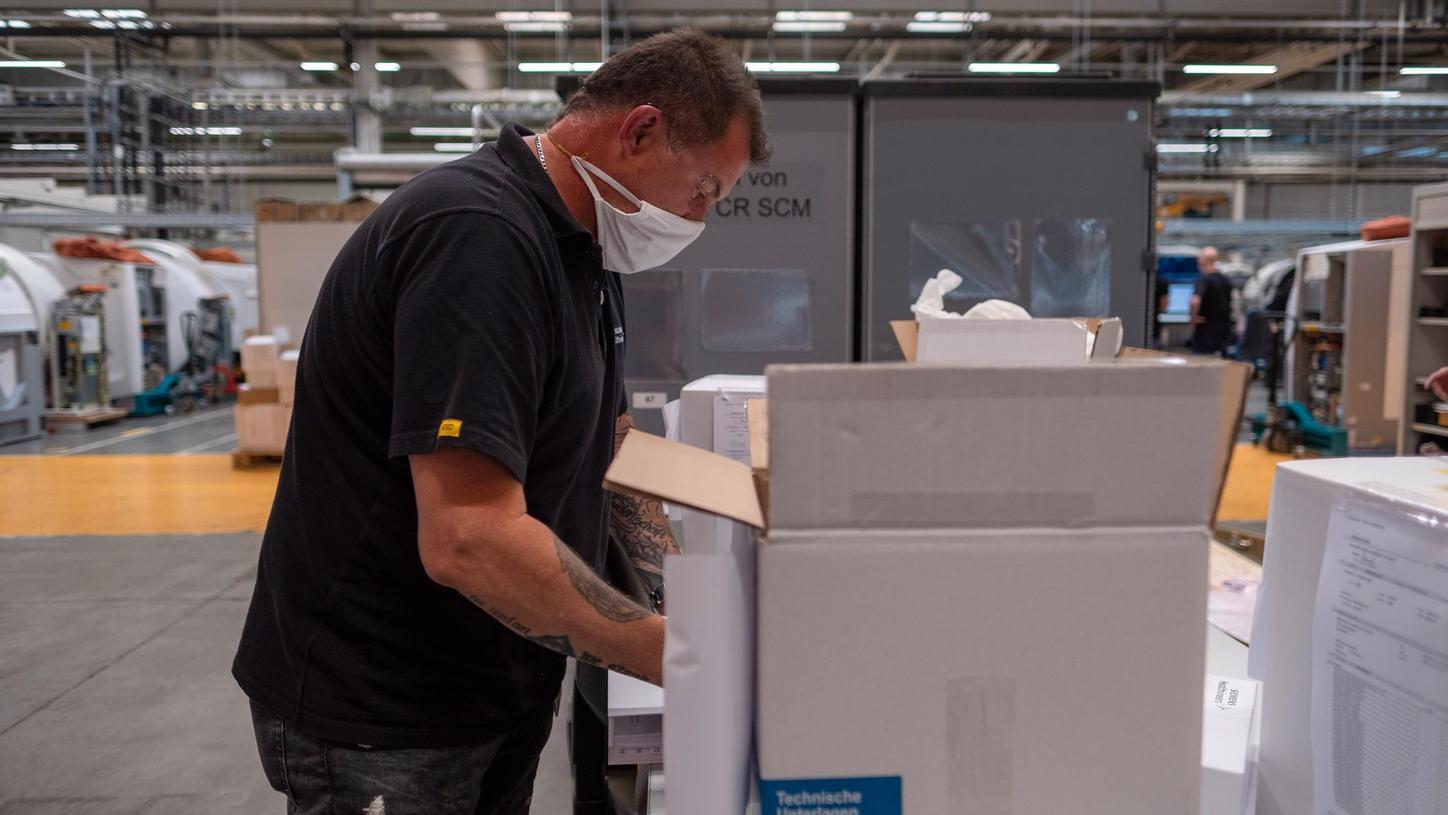
Due to the limited contact of the employees caused by the division of the teams, protocols are now more detailed than ever.
When Markus Wolferseder enters production today at the start of a shift, many things are different. The experienced grip goes to the mask before he passes an entry port. He will wear this for the next few hours if he is not working in the secured area of his so-called bunk, the separate workstations of the employees. Wolferseder is group leader for system integration and final inspection of SOMATOM go. CT systems in Forchheim, Germany.
In March, the implementation of the COVID-19 emergency plan not only changed the entire day-to-day work routine overnight, but the increasing demand for computed tomography necessitated a rapid rethink of usual procedures.

Andrea Engelmann also works in the CT production in Forchheim. “It was a huge challenge and not always easy – but we knew the importance of computed tomography in times of COVID-19. That was our contribution to saving lives,” says Engelmann.
The introduction of compulsory masks, extended operating hours, and the division of teams into two shifts was not easy. "The splitting of the teams was particularly challenging. This preventive measure was intended to ensure that at least one team was ready for action in the event of an infection,” says Wolferseder. “How much you depend on each other and the exchange between the individual departments is only noticed in an emergency."
Processes not only changed within production; the pandemic also made it more difficult for the installation teams to support service organizations in installing new systems. Instead of direct support on site, the complete installation of new equipment is carried out by telephone and video conferences. This is a new situation for everyone and sometimes requires tact and sensitivity as a group leader. "All in all, we are a very funny troupe, where jokes and sarcasm are not to be missed, especially now. This is one way for us to handle the situation better," shares Wolferseder.
"All in all, we are a very funny troupe, where jokes and sarcasm are not to be missed, especially now. This is one way for us to handle the situation better."

Although the feeling of solidarity and social responsibility has been the strongest motivation for accepting unknown challenges, it is immensely important to express mutual appreciation for a strong sense of collaboration. Since a personal meeting between the employees of the two shifts is currently not possible, small boxes with mascots, sweets and small messages have been set up in the bunks. Every employee has the possibility to leave a little greeting for the following shift.
Despite all the circumstances and changes, Wolferseder still draws lessons from the situation. "It is also something that I would like to maintain in addition to the higher hygiene regulations - to express appreciation for each other. I'm already looking forward to the day when the whole team can meet again,” he says.
Changing the Game with AI
Meet the AI scientist engineering an algorithm to fight the pandemic
In early February at the onset of the global COVID-19 pandemic, Bogdan Georgescu and his teammates began to observe the impact the disease has on the human body, specifically the lungs.
“Our team realized we needed to step up and support clinicians in this fight,” he said. “With our team’s main expertise in developing AI solutions for medical imaging analysis – we began to assemble an international effort to see how we could help.”
While medical imaging modalities and their role in supporting COVID-19 diagnosis is still being debated, most patients infected exhibit CT abnormalities. The extent of these changes also seem to correlate with the severity of the disease.
“We began to look at the impact COVID-19 has on lungs where it manifests as various opacities such as ground glass or consolidations,” Bogdan shares. “We started to work on a solution for automatic quantification of this impact.”
In just a few days, a global team of clinical collaboration partners, data annotators and board-certified radiologists were brought together. Using a variety of data sets from multiple frontline institutions around the world, the multidisciplinary team set to work to develop a solution using deep learning and reinforcement learning methods to address the main COVID-19 clinical questions faced by healthcare providers.
“A lot of things need to come together to realize such an application in a short amount of time,” he says. “First, we need relevant data and expert data annotations to test our concept. Second, we need effective AI algorithms and a high-performance computing infrastructure to develop the prototype. Finally, we need a deployment infrastructure with strong experts and clinical partners to ensure its success.”
Virtual Collaboration to Deployment
Given the crisis restrictions, the project teams couldn’t collaborate in-person and instead had to rely on digital collaboration platforms for the entire project.
“The virtual collaboration environment didn’t really affect our timelines,” Bogdan explains. “If anything, it actually made communication and interactions with all equally consistent and meaningful.”
Within three weeks, an initial prototype was designed to identify and quantify abnormal tomographic patterns in the lungs from chest CT scans.
“When radiological findings are used to confirm a patient’s COVID-19 diagnosis, the radiologist’s workload is significantly increased because more and more cases need to be read, annotated, and prioritized,“ he says. “AI-powered tools have the potential to reduce the growing burden on radiologists by quickly providing automated results that make their work more efficient.“
The Siemens Healthineers team is proud to support this effort in the fight against COVID-19 and use AI as a solution to fight the global pandemic.
Francisco and Stalin – Remote cooperation
Read how our Ecuador colleagues stepped up and repaired a CT system with the help of remote support

Repairing a CT Scanner Remotely
When Francisco Velasquez Palma and Stalin Abarca Vinueza, Customer Service Engineers at Siemens Healthineers, were given the information to repair the CT scanner’s tube at Guasmo Sur Hospital, they faced a major challenge. Colleagues who are normally responsible for this repair were unable to travel to Guayaquil due to travel restrictions, so they had to step in. "Up to now, we have only carried out such repairs with the help of more experienced service engineers. This was the first time that we had to do this process alone without additional support,” Francisco says. Even with the usual help from remote assistance during the repair, it would not have worked as the signal in the CT scanning room was too weak.
"It was really a challenge. We therefore had to prepare ourselves carefully for the task at the customers site and carried out simulations in virtual consultations with experienced colleagues, for example," recalls Francisco. Despite all the preparations, it was not clear what to expect on the ground. The stress of working in a Covid-19 hospital was also high.
Preparing for the Future
"The situation in Guayaquil was really tense. We suffered from a very high peak of infections and everyone was nervous and afraid of getting infected," Stalin says. "But we definitely felt that we were well prepared, which reduced the stress in this regard a bit." The team could also see this type of cooperation in the future.
"In our experience, we can say that remote support could be a powerful tool for the future. The joint preparation and implementation at the customer's site worked smoothly," says Francisco.
Juliana Calle Alvarez and Jack Springer - switching shifts to save lives
Social distancing goes beyond six feet, meet our colleagues who voluntarily shifted their work schedules to keep others safe
COVID-19 has impacted everyone in different ways. For colleagues Juliana Calle Alvarez and Jack Springer, it changed both their work and home lives.
“When the pandemic started, both Jack and I agreed to switch our usual shift of 6:00 am to 1:30 pm to 2 pm to 10 pm,” says Juliana. “We volunteered to do this to reduce our exposure to others and help keep our other teammates safe by reducing presence onsite.”
Working at the Siemens Healthineers Point of Care Manufacturing site in East Walpole, Massachusetts, the product lines Juliana and Jack support are some of the most in-demand.
“Our work consists of building RAPIDLab® 1200 Systems that are later distributed to hospitals all over the world,” shares Jack. “As of right now, our products are in high demand.”
Due to the critical need of the solutions they support, both colleagues feel the best part of their jobs is knowing they are doing their part to help fight the pandemic.
“What we do here is crucial, we supply hospitals with our blood gas products, and these are helping to battle this infection,” says Juliana. “Although we know that we are putting ourselves at risk by coming into work, we know that we have to continue because without us to keep production running, our customers will not have the products they need to treat COVID-19 patients.”
The team in Walpole is doing everything they can to keep employees safe – from alternating shifts, implementing hand sanitizing stations and ensuring all workstations are 6 or more feet apart. Regular temperature checks take place at the site to ensure everyone there is both safe and healthy.
“Although both Juliana and I have made sacrifices, such as seeing our families a bit less – our whole team has truly come together,” shares Jack. “We have adapted both personally and professionally to keep production running and ensure our customers have what they need to fight the pandemic.”
Acquiring equipment to keep our teams safe
Not only nurses and doctors rely on protective equipment. So do our colleagues who are on the frontlines – in hospitals – fighting the virus. They protect themselves from infection by wearing suits or coats, gloves, masks and glasses. Our customer service engineers, and application specialists are counting on receiving this equipment to help protect not only themselves, but our customers. But who ensures that our employees receive this protection?
Protective equipment is in short supply
Our colleagues in the areas of Logistics, Supply Chain Management, Procurement and Environmental, Health & Safety all make sure that colleagues get everything they need to work in hospitals safely. In these times, this is a very special challenge, as Benjamin Goh, Procurement Specialist from Singapore explains, "During the pandemic, our suppliers naturally prioritize hospitals, especially for masks or hand sanitizers. There was a point when none of our partners could supply us – or tell us when this would be possible again."
Benjamin had to act quickly and find new suppliers because the demand for protective equipment was critical. He checked offers for quality and availability and ensured that they could be agreed with our company’s specific terms and conditions. The procurement expert worked closely with supply chain management colleagues and arranged for the order and delivery to take place within 1.5 weeks. "I was very happy that the PPE could be delivered so quickly to my colleagues in the hospitals," says Benjamin. "I am pleased to contribute to ensuring that we can all work safely and securely."
Putting packages together for colleagues
Our colleagues in the Philippines faced similar challenges. In the Manila metropolitan area, PPE became scarce and suppliers were unable to comply with their contracts. Environmental, Health & Safety employees on the ground were working on a whole new way to ensure the safety of their colleagues, who took care of the availability of devices for customers: they went from store to store and bought gloves and masks.
“We all need to act quickly and make decisions before we have a concrete plan. That's quite a challenge for our EHS team. But it is a pleasure to see how we manage this situation – and that the health of our employees is a priority for our company.”
Meanwhile, supply chain management colleagues were able to enter into new contracts with suppliers and secure supplies for another three months. Together, the two departments packed supply packages with protective clothing and distributed them to their colleagues in the metropolitan area. Although many domestic flights and transport trips had already been cancelled, they made it possible to send the equipment to colleagues at other locations in the country.
Rajendra and Rohan - Revamping radiology equipment
Learn how Rajendra Vidhate and Rohan Paralkar helped restart a radiology department in 48 hours
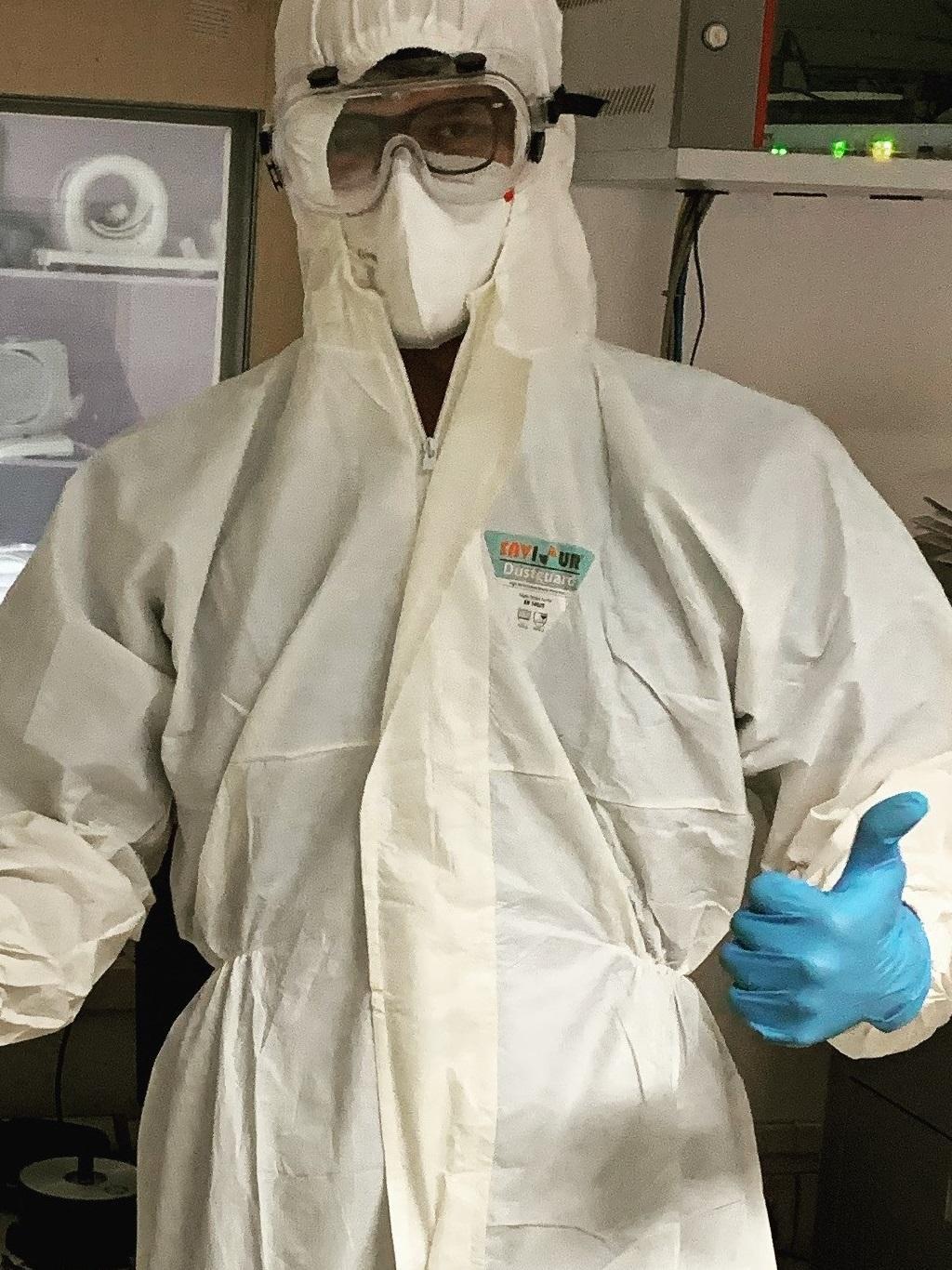
Stepping in to help
Our service team in India was approached by BMC to ensure that equipment installed at the hospital’s radiology department was fully functional to support the medical professionals diagnosing patients. That was a big challenge for our Service Engineers Rajendra Vidhate and Rohan Paralkar, because the equipment had been sitting idle for almost two years, and they had to restore it to normal operation in the shortest possible time – and they had to do it while the facility was already being used for isolating COVID-19-infected patients. “The situation was scary,” Rohan recalls. “However, I believe that as long as we take all the precautions and follow social distancing rules, we can do our part to flatten the curve and support the fight against the novel coronavirus.”

Restoring systems to help patients
And that's exactly what they've done. Rohan first arrived at the hospital and checked all available equipment consisting of X-ray, CT, MR, PET-CT, and cath lab systems. He took scans to find out if the image quality was acceptable to the operating staff. “Thankfully, only the CT and MRI systems required a second visit to replacing spare parts,” he says. Rohan ordered the parts that were needed to get the system operational immediately. Thanks to his repair work, Rajendra was able to get the CT system back into operation when he arrived the next day. “We were lucky that we had the spare parts in local inventory here in Mumbai, so I was able to replace the parts and make both the CT and MR functional,” he explains. Rajendra also reloaded the MRI software with help from Rohan and telephone support from another colleague.
Working with their logistics colleagues, Rajendra and Rohan not only accomplished this challenging task in just 48 hours; they also ensured that the equipment in the hospital was up and running by providing customer service after the hospital became operational on March 18. “It felt great and filled me with a sense of pride that our contribution could help people who are in dire need of healthcare during this pandemic,” Rajendra says.
Subodhray Shah – Managing in changing times
Learn how Subodhray and his team in India keep a production line running efficiently while practicing social distancing
A lead for our production site in Vadodara, India, Subodhray and his team were challenged with keeping their point of care production lines moving, while maintaining proper social distancing protocol.
“In my career, I’ve never quite experienced something like the COVID-19 pandemic,” he says. “We are all trying to adapt and adjust and do the best we can – including how we keep production running as the point of care urine tests we create are critical for patient diagnosis.”
A new normal
Adjusting to a new normal for these manufacturing employees now involves alternating shifts to reduce headcount onsite, and when on campus, keeping the required six feet apart. Employees must always wear both masks and gloves.
“When we were told that only 20-30% of our original employee footprint was allowed back onto campus, we knew this would greatly impact how we produced our products,” explains Subodhray. “A process that once took us one day, now takes two days to complete. Communication and transitioning tasks between shifts has become more critical than ever.”
Connecting while social distancing
Despite the physical distancing faced onsite, leadership has attempted to engage more with employees – virtually. Hosting a weekly check-in, employees share how they are feeling and participate in virtual lessons around handwashing, hygiene and general questions related to COVID-19.
“Our employees, our production lines and our company have been challenged in ways we never thought possible,” says Subodhray. “I’m proud of our team and how we’ve adapted to keep our business moving while maintaining employee safety.”
Daniel Frisch – Imaging on the frontlines
Delivering fast results to doctors and nurses in the ICU with disease staging of COVID-19
Meet Daniel Frisch, Regional Business Lead for Ultrasound for EMEA East. In mid-March he stepped up to help Doctors Clevert and Schroeder at the University of Munich Medical Center as they documented how ultrasound imaging could guide healthcare workers on COVID-19 disease progression within the lungs.
“Being on the frontline with doctors and nurses in the ICU, we were able to assist with ultrasound imaging at the bedside, supporting immediate status updates on patients with COVID-19,” says Daniel. “I was happy to make an impact and support their need for fast results in disease monitoring and staging.”
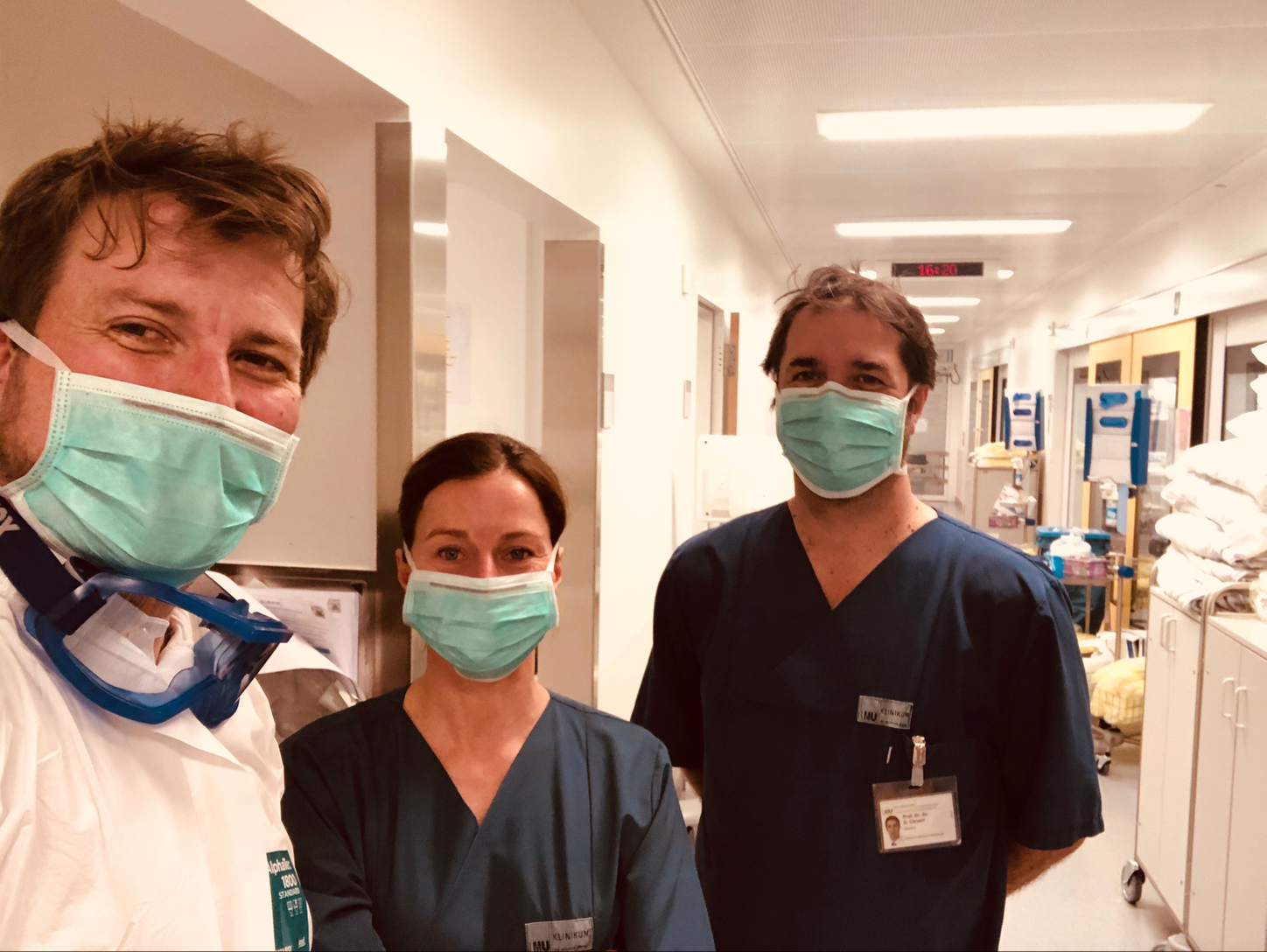
What he didn’t realize was how the scene would change from the first day on the job to the third. The need for results that matter was amplified with each second. “With the urgency around the COVID-19 crisis, I knew that time was of the essence as healthcare workers in this clinical environment would need options for rapid patient assessment on the severity of SARS-CoV-2 pneumonia,” he recalls. “I made the personal decision to suit up myself. Even though we’ve all experienced COVID-19 precautions in the office and at home, being on-site in the hospital it was shocking to see the reality of this go from in the news to real people suffering, each with their own story.”
Thanks to Daniel’s efforts collaborating with the clinicians, they have captured clinical images spanning various stages of COVID-19 within the lungs. Now, this invaluable information is accessible to clinicians around the world, as they continue to monitor, treat and manage this insidious disease.
Karim Elsayid - Staying connected despite the distance
Karim Elsayid, Senior Customer Service Engineer, tells us about working onsite in Egypt and how he and his colleagues deal with the new challenges posed by COVID-19.

Karim, how does the situation regarding COVID-19 feel for you at your location, and what project are you and your colleagues currently working on?
Despite the challenging situation, the overall mood is positive, and a strong connection can be felt. My colleagues and I are installing a new CT system in General Organization of Teaching Hospitals, which is part of a government organization. Due to our large catchment area, I am traveling over 100 km a day to complete the installation.
What are some of the special challenges you are dealing with onsite?
A part of the hospital is now allocated specifically for the treatment of COVID-19 patients. CT systems play an important role in the fight against COVID-19, however the planned installation had been postponed. Therefore, a quick completion is very important for us. In addition, wearing the protective suits makes the daily work more difficult. It´s challenging to breathe through a mask for an extended period of time during installations and over time it gets very hot in the protective suits.

How do you and your colleagues collaborate while working remotely? How do you stay connected despite the distance?
Our team already had a very strong social connection. However, we currently contact each other even more than usual. We ask how the other one is doing or discuss how we can support each other as a team even better or how we can share tasks. Usually we use videos calls several times a day to keep up to date, especially about new propagation areas and how to deal with them or take more care when working in them.
Erin Summers – A force for good
Determined to help her peers, Erin Summers volunteered to be a front-line X-ray technologist

“My mom is a nurse,” Erin says. “She works for two smaller facilities in New Jersey that were struggling to get more PPE, so I started making them masks. I wanted to help keep the staff and their patients safe.”
As a team lead in Clinical Education, Erin had heard about the Workforce Responder program as it was being developed. “I knew as soon as it was announced that I was going to volunteer,” she says. “Like many people, I felt helpless watching the pandemic unfold. But through this program, I could make a direct impact in a tangible way and be supported by my company. Siemens Healthineers made that possible.”
Erin was deployed to Hackensack University Medical Center one of New Jersey’s largest hospitals and one that has been heavily impacted by COVID-19. “When I arrived, I realized the whole hospital was a COVID response facility,” she says. “Almost every bed was for critically ill patients. All imaging was being performed in isolation rooms and in isolation gear.”
In addition to Erin’s time, Siemens Healthineers also provided support with a mobile X-ray system. “It feels empowering to be able to help our customers in this way,” Erin says. “We cannot begin to understand everything healthcare workers are going through right now. They are doing an amazing job.”
Hackensack University Medical Center is grateful for Erin’s courage and commitment. “Erin has been bravely working on the COVID ICU floors, helping the patients and team members. The generosity and commitment of Siemens Healthineers during this historic crisis is the true definition of partnership,” says Michael Horton, FACHE, Administrative Director of Clinical Services, Hackensack University Medical Center.
As for Erin, she continues to choose to be a force for good. “I left clinical work to come to Siemens Healthineers because I realized I could help many more patients by educating technologists,” she says. “This experience has reinforced how I feel about our company. I am not surprised we found a way to help during this crisis. What we do makes a difference every day.”
Ee Meng Shi – working shoulder to shoulder
How Meng Shi partnered with lab staff to drive a successful lab installation
Early March, Malaysia was hit hard by the second wave of COVID-19. The country's Centre for Infectious Diseases, Sungai Buloh Hospital, soon gained media attention as the numbers of COVID-19 patients rapidly increased. During this critical phase, Applications Specialist, Ee Meng Shi drove the successful installation of Atellica Solution*, supporting the prevention and diagnosis of COVID-19.
Meng Shi worked tirelessly shoulder to shoulder with the medical staff on-site to ensure a quick and smooth installation. The circumstances were difficult, however he felt a strong connection to the medical staff: “Under the surgical masks there were always familiar faces with a smile on their lips. Despite the challenges, we were always confident everything would work in time.”
It is this type of bond between people like Meng Shi and the medical staff that make such things possible over and over again – helping in the common fight against COVID-19. “Our duty is to contribute our best in healthcare, and I am proud to join hands with them,” says Meng Shi.
*Product availability varies by country.
Nishen Naicker – Keeping labs running
Meet Nishen Naicker, an In vitro Service Engineer in South Africa. Starting a new job during a global pandemic was not what he expected when he joined Siemens Healthineers six months ago.
In March, South Africa undercame a compulsory lockdown for 21 days to try and curb the spread of COVID-19. Nishen’s role, keeping our lab technology and equipment up and running, is considered an ‘essential service’ and requires him to go out into the eerily quiet streets, risking exposure to keep our healthcare infrastructure up and running.
One day, he was called to a laboratory at Addington Hospital, which had been identified as one of the COVID-19 isolation facilities in the province. “When the call was dispatched, as a field service engineer, you don’t think of which facility it is but only that assistance is required,” he said.
He worked on the instrument, troubleshooting and performing the repair when one of the staff members asked him if he was afraid coming to their site. Nishen recognizes the importance of his role to flatten the curve and protect those around him. Being a person that looks at the glass half full, he responded by sharing that we should not have a spirit of fear, but rather one of love and a sound mind. “A love for others is what drives us and gives us the get up and go, to be a helping hand every day and to put the needs of others before our own,” he shared.
Dave Douwes - Heroes' Assistant

Monday, 8 a.m. Dave puts on his scrubs, attaches his name tag. Then he grabs his protective mask and gloves and off he goes, down the hall, into the CT scanning room. Anyone watching this scene would surely think that he has been doing this job for a million years. But this is not how Dave’s workday usually starts. In fact, today is his first day at Maastricht University Medical Center (MUMC).
“Usually” ‒ that is, before COVID-19 turned into an unprecedented pandemic ‒ Dave is one of our Application Specialists. For almost nine years now, he visits radiology departments all over Europe to train technologists on how to get the most out of our computed tomography systems. But right now, his job is another one: He calls it “helping the heroes”.
In these times of crisis, the challenge in focus is of course caring for patients with more severe forms of COVID-19. What’s often not so much in focus is that the “usual” hospital operations also have to continue. And that’s where Dave’s helping hands are very much needed right now.
“When I heard how severe the situation at MUMC was, I knew I had to do whatever I can to support.” As a trained X-ray technologist, Dave has 22 years of experience at MUMC and still keeps in good contact with his former colleagues from the radiology department. “They told me they were going to work 12-hour shifts to care for their patients and keep up with the huge scanning demand. Every day, they give their all to keep our healthcare system from collapsing.” Dave knew that the way he could help the most was to temporarily switch back to this old job. And so he did.
“I started working at MUMC on Monday. It took about three hours and after that it was as if I never left,” he says. “And that’s greatly due to the way my former employer received me and how welcome everyone made me feel.”

Dave is supporting the radiology team in keeping up the daily routine and providing CT imaging for all of the hospital’s patients that are not there because of COVID-19. Those that are, are scanned in a special tent in front of the hospital, where MUMC set up an extra scanner to keep up with the increasing demand.
But that does not mean that Dave does not come in contact with COVID-19 patients: “We were able to catch three COVID-19 cases from the 80 screening patients we scanned last week.” Of course, every time Dave and his colleagues make such an incidental finding, extensive decontamination measures are taken to disinfect the scanning room and protect all the other patients that are being scanned and the team at MUMC. The overall situation is serious but that does not scare Dave away. On the contrary, he is proud to help and be able to add yet another position to his LinkedIn profile: “Heroes' assistant” it says.






